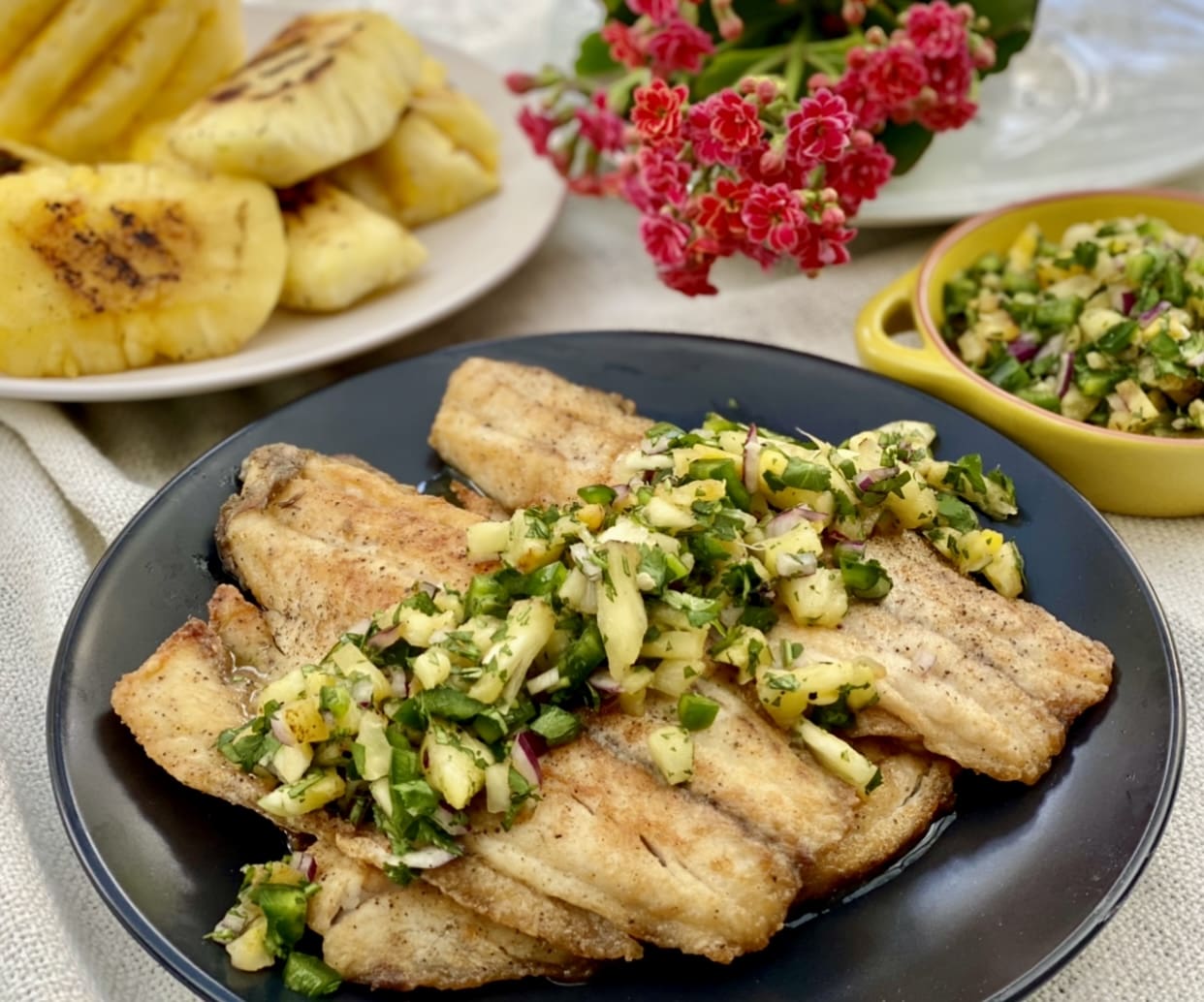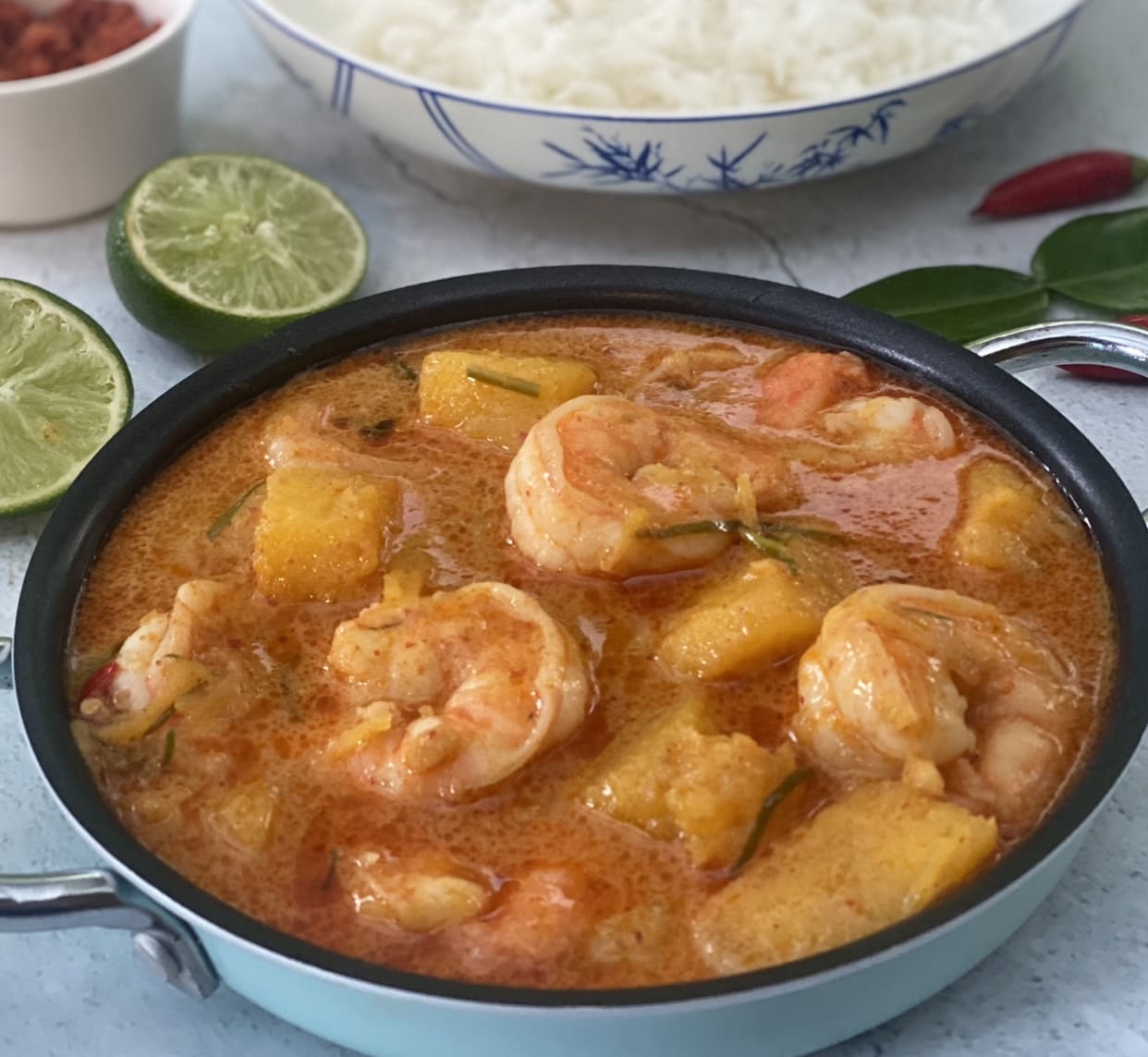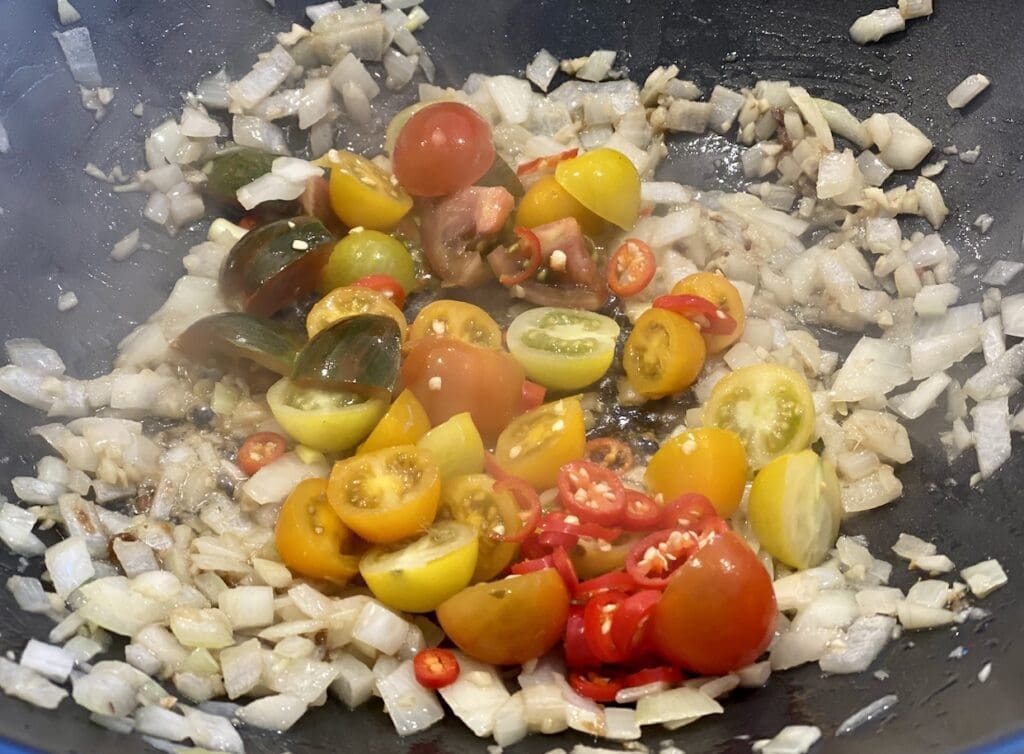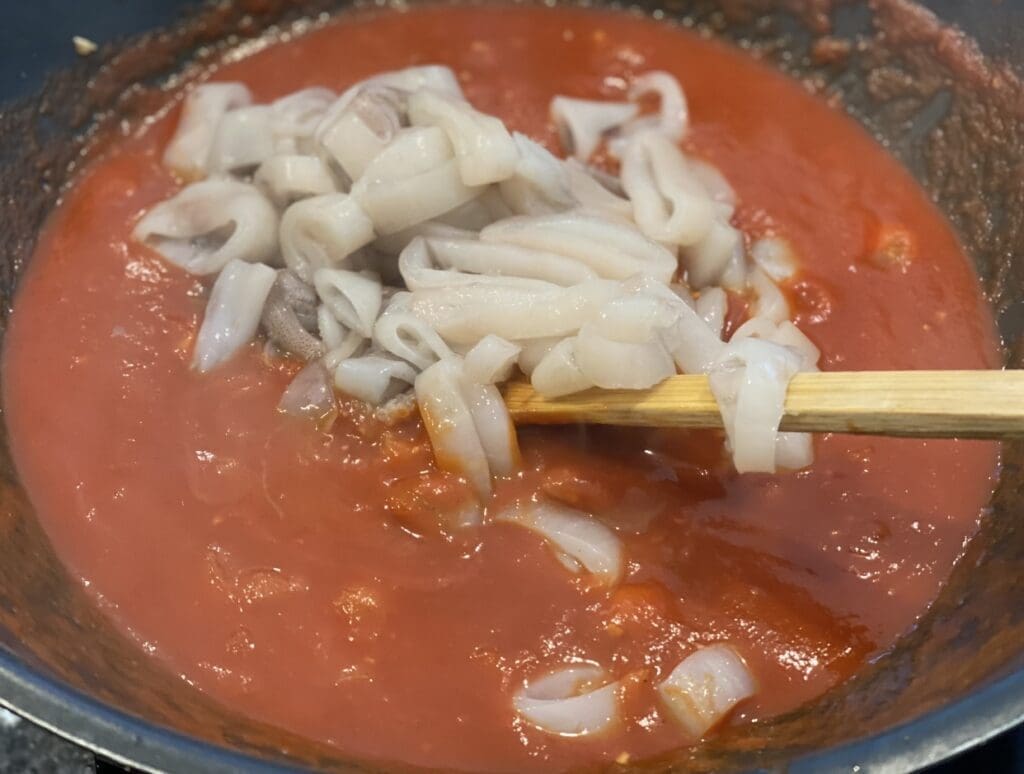
Squid Ink Pasta in a super delicious Spicy Anchovy Tomato sauce with tender pieces of calamari. This pasta dish is sure to impress!
I would never put a squid near my mouth!
As a kid, I watched a reporter telling us that squid was now on our menu. It was foreign to us back then! He stopped random people on the street and held a microphone up to their faces to ask them if they would try squid. Most screwed their faces up. One lady looked offended and said in disgust, ‘I would never put a squid near my mouth!’
Fast forward to the present. There are squid dishes everywhere! All fish and chip shops have calamari rings on their menu, and they’re very popular. It’s amusing to see how much we’ve changed!
I also remember when bottled water was first introduced to us. This outraged people, as they thought it was outrageous and pretentious to pay for bottled water when it was free on tap. Here we are paying up to $5 for a bottle of water without thinking twice!

If you’ve been following my blog for a while, you’ll know I’m a huge lover of all kinds of seafood. Squid, octopus or cuttlefish isn’t an exception.
Some people rather not prepare squid at home because they think it’s messy and tricky to cook. In honesty, it’s not that hard at all, especially when you have fantastic fishmongers that are happy to clean and prepare the squid for you.
The tastiest spicy tomato sauce with anchovies
The Squid Ink Pasta is served in a tasty spicy tomato-based sauce. The sauce has anchovies, garlic, onion, baby tomatoes, passata, chillies and stock. It goes beautifully with the black briny pasta and the calamari.
Hey, don’t run away because you saw anchovies! I don’t like anchovies on my pizzas or salads, but I LOVE cooking with them, especially with pasta. Anchovies provide flavour and depth to dishes without the pungent anchovy taste.

Why is squid ink pasta black?
Cuttlefish and squid produce dark ink to defend themselves from their predators. This ink is used to make squid ink pasta.
What does squid ink pasta taste like?
Dried squid ink pasta doesn’t have an overpowering sea taste, it’s actually very subtle. I’ve yet to have fresh squid ink pasta but I imagine it would be softer in texture with a stronger taste of the sea.
Seafood obsession? Why not give these recipes a try?

French Style Mussels

Fish with Pineapple Salsa

Lobster Mac and Cheese

Prawn and Pumpkin Curry
Ingredients for Squid Ink Pasta with Calamari

Squid ink pasta – I used dried squid ink spaghetti pasta, which I purchased at my local greengrocers. Squid ink pasta has a gorgeous black colour with a subtle briny sea taste. If you can’t get hold of squid ink pasta, just swap it with regular spaghetti or linguine.
Squid – I used freshly caught Loligo Squid from Queensland, Australia. They’re known for their tenderness and flavour. My local fishmonger cleaned the inside of the squids for me and removed the tentacles, but I removed the skin and sliced them. Your fishmonger should be happy to do all this for you.
Passata (pureed tomatoes) – Passata is pureed tomatoes that have been strained for a smooth consistency. Supermarkets usually stock passata near canned tomatoes and pasta sauces. Crushed tomatoes would also work.
Chicken stock/broth – I prefer using salt-reduced or low-sodium chicken stock because I have more control over the sodium level. This way I can adjust the seasoning in dishes to my liking. It’s always better to be under-seasoned than over-seasoned as it’s easier to fix.
Subscribe to 3CatsFoodie’s FREE Newsletter

For the latest recipes and other fun stuff!
How to make Squid Ink Pasta with Calamari
Step-by-step guide with photos


Cook the pasta – Cook the pasta as per the instructions on the packet but make sure not to overcook it. The pasta should be a little firm when bitten (al dente). Before draining the pasta, reserve a cup of the pasta water and set it aside. Drain the pasta using a colander, then rinse it with cold water. Leave the pasta in its colander and set aside until needed.
Clean the squids (if not already done by the fishmonger) – Remove the head from the body of the squid and remove the innards. Reserve the tentacles by slicing them underneath the eyes of the squid. Rinse out the squid tubes and slice them into 1cm/0.4in rings.


Heat oil in a large deep frying pan over medium heat. Place in the garlic, onion and anchovies, then stir-fry for a minute. Use a wooden spoon to break up the anchovies into tiny pieces to help them dissolve. Add in the tomatoes and chillies, then stir for another minute.




Stir in the passata stock, sugar and salt. Bring the sauce to a boil, then reduce heat to medium-low. Place the squid into the sauce and simmer for 5 minutes. Add in the pasta until heated through. If the sauce is too thick, loosen it with some reserved pasta water by adding a tablespoon at a time. Have a taste and add salt and pepper to your liking if needed. Remove the pan from heat and stir in the parsley.
Leftovers – Allow the pasta to cool completely at room temperature, then transfer it into a sealed container and store it in the fridge. The Squid Ink Pasta should be good for 2 to 3 days.
I’ve used a third-party application to calculate the calories and nutritional information, so please use this as an approximate guide only.
Cooking measurements are in Australian standard spoon and cup measurements. For specific details and conversions, visit our Australian Cooking Measurements page.
I would love your feedback and support if you made this recipe. To do this, please rate this recipe and provide a comment by scrolling down this page or by clicking that green circle on the bottom left. An email address is required (for spam), but it won’t be published. I would also love to see your dish, so don’t forget to tag me on my Instagram account ‘3catsfoodie’
Cheers – Cat T

Squid Ink Pasta with Calarmari
Ingredients
- 400 gm dried squid ink pasta (NOTE 1)
- 500 gm squid (cleaned and cut into 1cm/0.4in slices) (NOTE 2)
- 1 tbsp olive oil (mild or light)
- 3 cloves garlic (minced)
- 1 small brown/yellow onion (finely diced)
- 4 anchovy fillets (drained and chopped)
- 200 gm cherry tomatoes (or any small tomatoes, halved)
- 2 small birds eye chilli (omit, or adjust to taste, sliced finely)
- 700 ml passata (tomato puree, or crushed tomatoes) (NOTE 3)
- ½ cup salt-reduced chicken or fish stock (125ml/4 fl oz) (NOTE 4)
- 2 tsp sugar
- ½ tsp salt
- ¼ cup finely chopped flat-leaf parsley
- salt and pepper to taste
Instructions
- Cook the pasta – Cook the pasta as per the instructions on the packet but make sure not to overcook it. The pasta should be a little firm when bitten (al dente). Before draining the pasta, reserve a cup of the pasta water and set it aside. Drain the pasta using a colander, then rinse it with cold water. Leave the pasta in its colander and set aside until needed.

- Clean the squids (if not already done by the fishmonger) – Remove the head from the body of the squid and remove the innards. Reserve the tentacles by slicing them underneath the eyes of the squid. Rinse out the squid tubes and slice them into 1cm/0.4in rings.

- Heat oil in a large deep frying pan over medium heat. Place in the garlic, onion and anchovies, then stir-fry for a minute. Use a wooden spoon to break up the anchovies into tiny pieces to help them dissolve. Add in the tomatoes and chillies, then stir for another minute.

- Stir in the passata stock, sugar and salt. Bring the sauce to a boil, then reduce heat to medium-low. Place the squid into the sauce and simmer for 5 minutes. Add in the pasta until heated through. If the sauce is too thick, loosen it with some reserved pasta water by adding a tablespoon at a time. Have a taste and add salt and pepper to your liking if needed. Remove the pan from heat and stir in the parsley.







